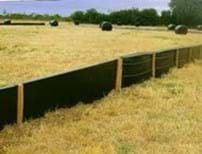Environment - mitigating and managing impacts
We have a responsibility to protect and enhance the environment around all our road improvement schemes. This is critical to addressing climate change.

An introduction to biodiversity
Road verges can connect severed habitats. With new roads we can provide green corridors for wildlife, connecting fragmented habitats in the wider landscape, enabling plant and animal populations to move interact and become stronger.
How are we helping biodiversity?
-
We’re taking a local approach, working with partners to recognise what is special and distinctive about the habitats, plants and animals in a given location, and then putting in place measures to best support their health and growth.
-
We have carried out surveys of ecology, water and watercourses, assessments of noise, air quality and impacts on climate change since 2017. These surveys help us understand which species are present and how the road will affect them so that we can minimise our impacts while the road is under construction and when it’s open to traffic.
-
We are erecting bat and bird boxes and building a mammal tunnel beneath the road where we know wildlife are already active.
-
Our environment team are putting in place mitigation measures to manage waste, minimise noise, dust and air quality impacts, and safeguard protected species.
-
We will continually monitor the effects of our work so that we can improve our methods to further reduce the more difficult impacts where we can.
-
We are exploring all landscaping options to increase our biodiversity net gain and we will update you through the scheme as these plans develop. We will achieve no net loss of biodiversity across all our activities by 2025, and net gain after that.

[Image: The great crested newt]

[Image: Temporary amphibian fencing to control movement of protected species]
An introduction to carbon and net zero
We have published our Net Zero Highways Plan to rapidly cut carbon in line with the UK's commitment to be a net zero economy by 2050 and the 1.50C reduction goal of the Paris Agreement.
Our plan sets out our ambitious programme as roads play a pivotal role in delivering a net zero carbon connected country.
We are taking action in three areas:
-
Net zero for own operations by 2030
-
Net zero for maintenance and construction activities by 2040
-
Supporting the rapid shift to zero carbon travel on roads by 2050
So what are we doing on the A428?
We are already doing a lot to tackle carbon. Technology and innovation are key to meeting this challenge:
-
We are using digital mapping to identify hotspots where carbon emissions are higher so that we can look to reduce these.
-
This use of digital technology is a new way of working that provides a detailed carbon assessment of the construction process.
-
This means that we are constantly reviewing the construction carbon emissions on the project to keep them to a minimum.
During construction where possible we will also:
-
Use renewable or low carbon energy generation at construction compounds
-
Use low carbon plant equipment and vehicles
-
Use low carbon materials or materials that absorb carbon dioxide
-
Use low carbon construction techniques
-
Source recycled or secondary materials from the local area.

[Image: Carbon "heat mapping" of one of the bridges at the reconfigured Black Cat junction]
You can read more about National Highways' ambitions on our environment pages.
Sign up for updates
Keep updated on the A428 Black Cat to Caxton Gibbet improvements
Sign up for updates